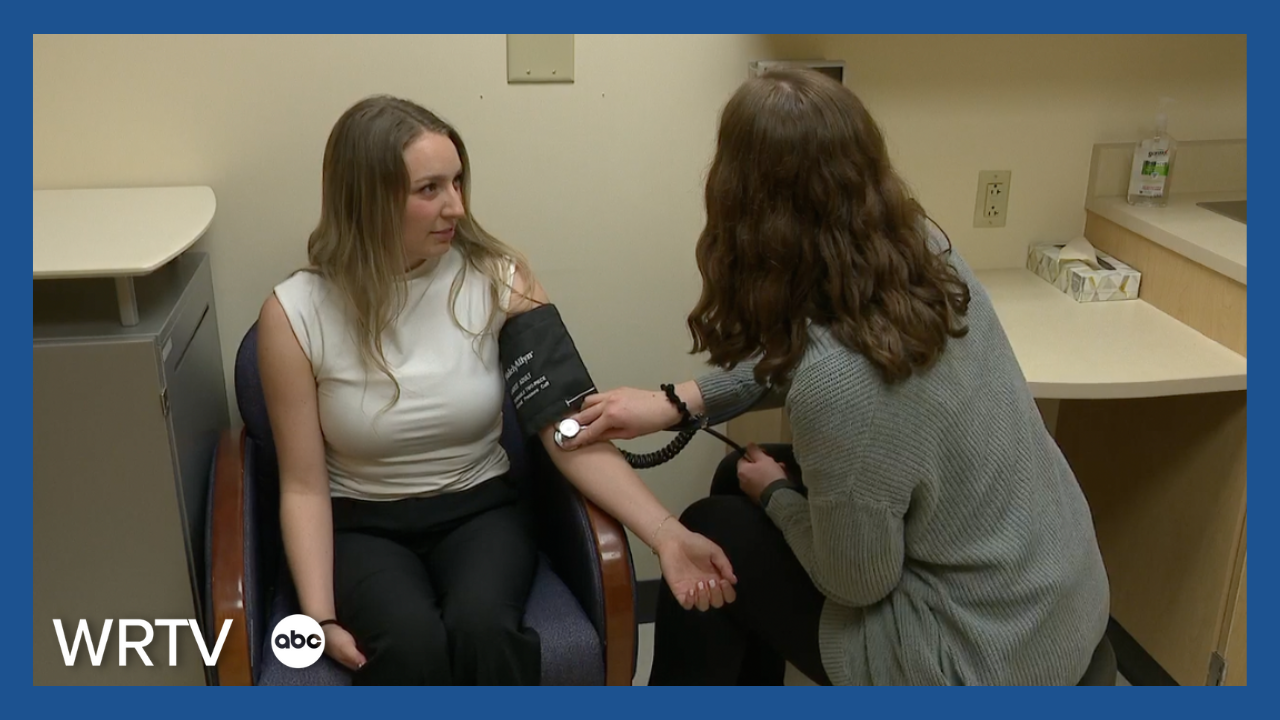BROOKVILLE — It was another busy day at Margaret Mary Health in Brookville.
“I saw 25 patients yesterday, 23 today, and half of them are new,” said Dr. Douglas Engle.
Engle started in the rural community about a year ago.
“I fill the gap of two physicians leaving,” he said.
Brookville is a town of just over 2,500, but Engle’s patients travel from all over.
“I have patients that travel an hour to an hour and a half to get here to come see me because there’s no one nearby,” he said.
Engle understands the need. He grew up in a small town outside Kokomo. That’s why he attended the Indiana University School of Medicine and took the rural track.
“My plan was always to go back to a rural area to practice medicine,” he said.
Dr. Taihung Duong, associate dean and director for the IU School of Medicine in Terre Haute, helped start the program.
“In 2006, the American Medical Association asked all the medical schools to increase the enrollment of medical students by 30% and this is to offset future shortages of physicians,” Duong said.
The IU School of Medicine offers the Rural Medical Education Program (RMEP) at the Terre Haute campus. This unique four-year medical school program emphasizes primary care and other specialties of need in rural communities. The program has grown from eight students to more than 80 enrolled today.
“Right now, in total, we have about 80-some students enrolled in the program. Our entering class is 24 students a year, but out of those 24 students, 16 are actually on the rural track,” he said.
Some of those students train inside the Molly Wheat Memorial Clinic.
“We are open every other Saturday, and that’s in the morning from 8 a.m. to noon. Really, we target underserved and underinsured populations,” said Allison Stogsdill, a medical student.
Stogsdill and her classmate Molly Barten both grew up in rural areas without easy access to primary care.
“I’m from Iowa, a small town called McCallsburg. It’s a town of 300 people,” Barten said.
“Nashville, Indiana,” Stogsdill said. “So my county, Brown County, does not have a hospital.”
They remember driving 30 to 40 minutes to see a doctor.
“Especially things that stood out in my brain when the weather was bad and there were snowstorms a lot growing up,” Barten said. “Those memories, driving long distances took forever. It was hard, and it made me realize it makes people’s lives a lot easier when health care is close and accessible and you don’t have to fight to get where you’re going just to see a doctor.”
“I think it’s definitely instilled a motivation and a drive to do what I do right now and to pursue medical school,” she said. “I think it’s really motivating to see your own loved ones fight through things, or when you talk a lot about rural medicine, it’s a real lack of access not only to equitable care but also to just transportation and some things that close," said Stogsdill.
Duong said recruiting students from rural backgrounds is key.
“Unless someone is from a rural area, they probably won’t go back and practice in a rural area,” he said. “So we actually have to recruit people from rural areas because we can teach them medicine, but we can’t teach them how to live rural.”
He said bringing students into small towns for hands-on training helps them connect.
“When you’re looking at a small-town physician or rural physician, it’s really a community member that’s a leader and contributing to the betterment of the community,” Stogsdill said. “So I think that this program does a really good job of pairing us with primary care physicians in the surrounding areas, seeing how they work as well.”
Back at Engle’s office, it’s that bettering of the community that keeps him motivated.
“You see the appreciation just even in some of the patients' faces, and they just say, 'Thank you for coming to our community,'” Engle said. “And I have patients all the time, 'Do you like it here? Are you going to stay here?' Because they’re desperate to have someone in an area like this. But it means a lot. I love keeping people out of the hospital, I love keeping people healthy, and this community really needed it, just like a lot of rural communities.”





